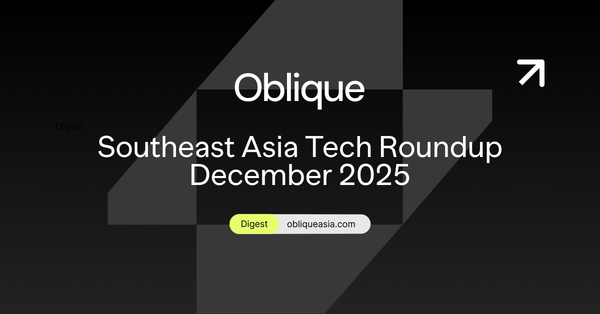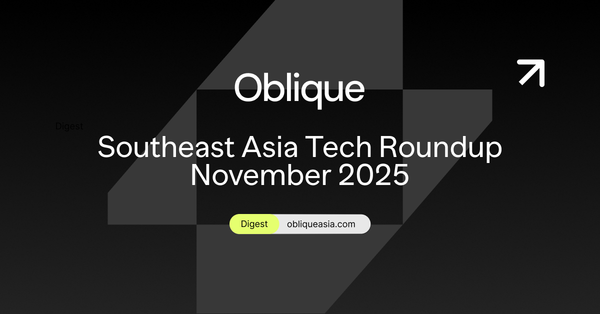The Taste Gap: Tech Makes Creative Work Forgettable
Technology makes content creation effortless, but widens the taste gap between what we produce and what truly matters. Excellence requires craft.

A young freelance graphic designer, fresh out of college, opens Canva and assembles a striking brand deck in under an hour—each slide well put, every color on-trend. Across the city, a first-time startup founder types prompts into ChatGPT, yielding a flawless pitch deck and a polished mission statement. On the surface, everything looks and sounds right: clean, confident, professional. But for all their textbook perfection, both creations are strangely hollow—easily made, easily forgotten.
This is the modern taste gap: where new creators, armed with powerful tools but little experience, produce competent work that leaves no lasting mark. Technology gives us the means to create, yet it can’t teach us what matters—or why some work endures when the rest fades away.
The Promise and the Paradox
Ira Glass, the legendary radio producer, articulated what creative practitioners have long understood:
"All of us who do creative work, we get into it because we have good taste. But there is this gap. For the first couple years you make stuff, it's just not that good".
Glass's "gap" describes the painful distance between a beginner's refined taste and their rudimentary ability. The only bridge across is volume—doing enough work to close the distance between vision and execution.
But today's technology has inverted this relationship. AI and automation tools have compressed the skill gap, making production trivially easy. A novice can now generate outputs that would have required years of training. Yet the taste gap—the ability to discern excellence from adequacy, to recognize what matters—remains stubbornly unchanged. Perhaps it has even widened.
Research confirms this paradox. Writers using AI produce better individual work, but collectively, they create less diversity. The technology enables competence at scale while eroding the distinctiveness that makes work memorable. We have optimized the making, but not the meaning.
The Industrial Revolution of Thought
We have been here before. The Industrial Revolution replaced artisanal craftsmanship with mechanized production. Shoes, textiles, furniture—all could be manufactured efficiently and uniformly. Products became more accessible. They also became more bland.
Today, we face the automation of thought itself. Generative AI processes massive volumes of human-created content and reflects it back, rearranged and recombined, but fundamentally derivative. The danger is not that AI will fail us, but that we will accept the threshold of adequacy as achievement.
This is algorithmic mediocrity: AI excels at producing competent-sounding content that bears the signs of human creation without the spark of ingenuity. It thrives precisely where the demand for originality is low and adequacy is adequate. When everything is fast, frictionless, and serviceable, we risk losing the depth, nuance, and intellectual richness that define exceptional human work.
When Technology Democratizes, Craft Disappears
Desktop publishing in the 1980s democratized design, enabling anyone with a computer to create professional-looking materials. The result was both liberation and dilution. The ease of access led to widespread adoption of the same templates, the same fonts, the same safe aesthetics.
Decades later, website design exhibits the same homogenization. A 2021 study analyzing over 227,000 images from 10,000 websites found that layout similarity declined 43% between 2010 and 2019—meaning everything started to look the same. Designers using the same tools, optimizing for the same metrics, produced the same results.
The trend extends to logos. Major brands—Google, Uber, Airbnb, eBay—have replaced distinctive wordmarks with generic sans-serif typefaces. Designer Michael Bierut observed that "people actually only partly want differentiation, they want it up to a point". The preference for familiar, safe designs creates what critics call "blanding"—a blur of resemblance where brands become visually indistinguishable.
The Algorithmic Anxiety Economy
Kyle Chayka calls this phenomenon "Filterworld"—the vast, interlocking network of algorithms that has flattened culture. Whether visual art, music, film, or literature, algorithmic recommendations guide our attention toward what fits best within digital platforms. The result is homogenization: as fewer people see content that doesn't get promoted, there is less awareness of it and less incentive for creators to produce it.
The rule of culture in Filterworld is brutal: go viral or die. This creates what Chayka calls "algorithmic anxiety"—the paranoia, fear, and confusion creators feel when algorithms judge them either incorrectly or far too accurately. Creators optimize for engagement rather than excellence, producing content designed to appease the algorithm rather than express a distinctive voice.
The toll is measurable. A 2025 study found that 52% of creators experience burnout, with 37% considering leaving their careers. One influencer with 2 million followers explained: "I've come up with hundreds, if not thousands, of video ideas. That's emotionally exhausting. And the algorithm is inconsistent—your success depends on something you can't control".
Success is tethered to opaque systems creators cannot control. Self-expectation drives relentless comparison. Audience scrutiny exposes every post to public judgment. When content underperforms, creators work harder, deepening exhaustion in a cycle difficult to break. Ease is not progress. It is anesthesia.
The Hard Work of Taste
If ease is the enemy of excellence, what is the antidote? Paul Graham, in his seminal essay "Taste for Makers," argues that taste is not subjective but learnable—a practical skill developed through deliberate engagement with quality. Good design, Graham contends, is simple, timeless, solves the right problem, and looks easy precisely because enormous work went into making it appear effortless.
The path to taste is paved with what researchers call deliberate practice: focused, systematic work on specific weaknesses with continuous feedback. Anders Ericsson's research on expertise reveals that masters become great not through endless hours but through the type of practice they do—constantly pushing beyond current capabilities, seeking out areas of weakness, and targeting improvement with structure and measurement.
This requires embracing iteration not as failure but as process. Real iteration means rethinking problems and trying new directions, not making superficial adjustments. It demands humility: accepting that designs can always improve, that first attempts will disappoint, and that excellence emerges only through repeated cycles of creation and evaluation.
Steve Jobs embodied this obsession with craft. Walter Isaacson's biography reveals Jobs's conviction that quality extends to "the parts you couldn't see". Jobs learned from his adoptive father, a mechanic who insisted: "He loved doing things right. He even cared about the look of the parts you couldn't see". This ethos—that invisible details matter, that craft is non-negotiable—separated Apple's products from technically competent but soulless competitors.
The Discipline of Restraint
Taste is as much about what you don't do as what you do. Minimalism in photography requires "shooting with intent and editing with restraint". The goal is to refine the image, not reinvent it. The most effective designs come from understanding what should be omitted rather than what can be added.
Doug Chiang, the concept designer behind The Mandalorian, wrote that "the key to successful Star Wars design is restraint. The hands of the artist remain hidden". Restraint means working within constraints, practicing humility, and recognizing that simplicity is harder than complexity. It requires confidence to resist embellishment, to trust that clarity communicates more powerfully than decoration.
This discipline applies equally to writing, branding, and business strategy. The best content is edited ruthlessly. The strongest brands resist trend-chasing. The most successful companies say no to opportunities that dilute focus. Restraint is not limitation. It is intentionality.
Those Who Resist
Not everyone has surrendered to algorithmic mediocrity. Across industries, practitioners are reclaiming taste as a competitive advantage.
In craft, artisans are finding that in a world of infinite replication, authenticity becomes scarcity. Research shows that 94% of Etsy buyers prioritize handmade quality, and craft workers rank among the least vulnerable to AI displacement. Code can be automated. Craft cannot.
In branding, companies like Patagonia, Fenty Beauty, and Glossier have built loyalty not through scale but through distinctiveness—environmental activism, inclusive representation, user-generated authenticity. Fast Company's 2024 "Brands That Matter" list highlights companies that aren't just contributing to culture but shaping it through taste, mission, and craft.
What unites these examples is a refusal to optimize for ease. They embrace the hard things: iteration, restraint, patience, risk. They understand that the promise of technology was never that success would be easy—only that it would be possible.
Closing the Gap
The taste gap will not close itself. Technology will continue to make production easier, faster, and cheaper. AI will generate more content, automate more tasks, and optimize more processes. The baseline of competence will keep rising—and so will the ocean of mediocrity.
But taste remains irreducible to algorithms. It requires human judgment, cultural knowledge, and aesthetic discernment that no model can replicate. It demands the courage to reject easy answers, the discipline to iterate endlessly, and the confidence to exercise restraint. Most of all, it requires embracing the hard things—the parts of creation that resist automation precisely because they require wisdom, not just intelligence.
For creators and businesses navigating this landscape, the path forward is paradoxically both ancient and urgent: do the work, develop taste, resist mediocrity, and trust that excellence—not ease—creates lasting value. The technology is available to everyone. Taste is not.
Technology makes success possible. Taste makes it matter.
And in a world drowning in content but starving for meaning, that difference is everything.





